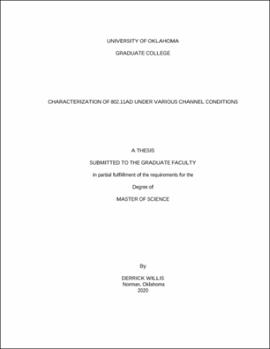| dc.description.abstract | The latest Wi-Fi standard, IEEE 802.11ad, offers the most open and uncongested radio spectrum for wireless communication on the market today. The standard’s capacity has maximum utility in locations with dense network activity, such as apartment buildings, airports, and other heavily populated locations. Because the standard boasts the highest theoretical throughput of 7 Gbps for devices with native support, market adoption has largely relied on the enthusiasm of technology vanguards. To increase widespread interest, backward compatible Wi-Fi dongles were created to regenerate legacy devices.
Although the MG360° Wi-Fi dongle platform detailed in this thesis showed a loss of 5 Gbps in theoretical network performance compared to native support, it gains portability across devices. The return of investment on these actions predicts a market growth of 7.4 billion USD by the year 2024. As the 802.11ad standard continues to evolve with time, the settings in which it is deployed will have profound effects on performance. This thesis evaluates 802.11ad network performance in terms of throughput, channel power, and their relationship in three different but typical environments.
All experiments were examined through adaptive beamforming to discover the optimal multipath for signal interference. A multiuser domain, which is alternative to the current tri-band configuration available on the market, was simulated for exclusive 802.11ad usage. Parameters—serving as the degree of transmission,—and environmental reflectivity offered insights about the influence of the signal-to-noise (SNR) ratio in Wi-Fi communications. A polynomial empirical model assessed channel power and its relationship with distance. Extrapolation extended the polynomial model to help further explore the channel power and throughput relationship under adaptive beamforming. | en_US |
